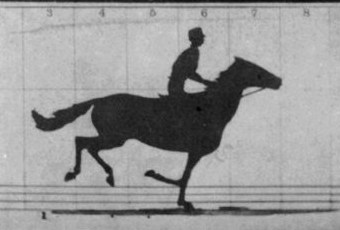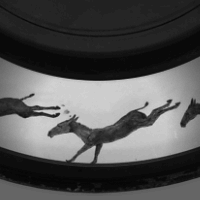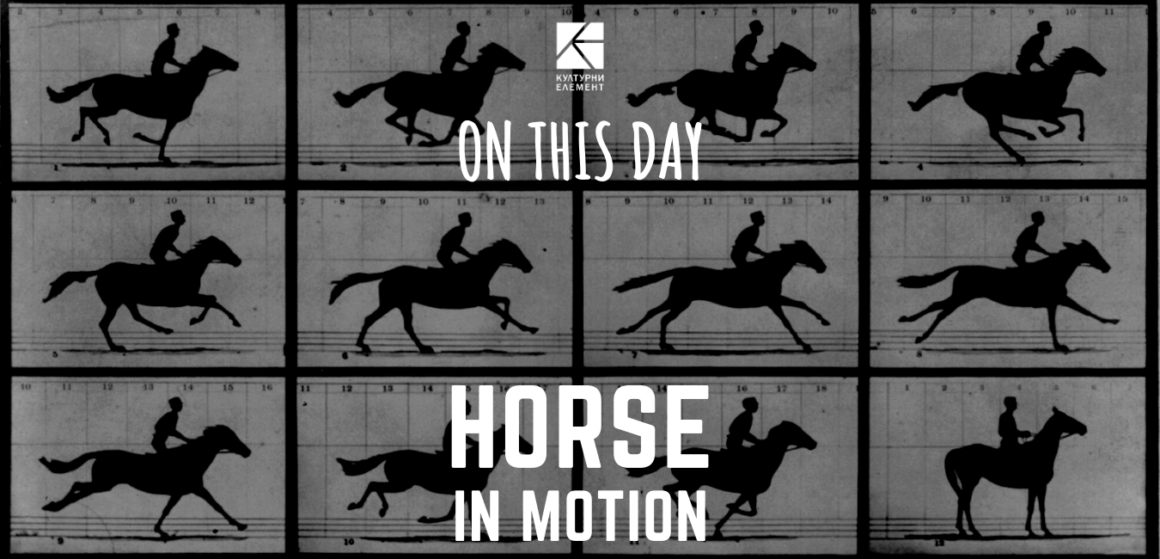On this day, June 15, 1878, the British photographer Eadweard Muybridge began making the famous series of photographs that went down in history as the “Horse in Motion.” From June 15 to 20, 58 frames were created, thanks to which he became a pioneer of the desire to capture movement photographically, and his most important invention was the zoopraxiscope, a device for projecting moving images that was used before today’s celluloid film strip.
Muybridge

Edward James Muggeridge was born in the English town of Kingston on the Thames. Although not confirmed, it is believed that he changed his name out of respect for King Edward as it is written at the foot of his coronation stone in Kingston (Eadweard instead of Edward), which was erected there in 1850. Magerridge became Muygridge, to then in the early 1850s he changed his surname again to Muybridge after moving to the United States. He started working in America as a bookseller and publishing agent, and after he almost died in a carriage accident in 1860, his return and long recovery in England finally directed him and he became interested in photography. In 1866, he returned to America and began working in a photography shop. The following year, in 1867, he published photographs of Yosemite and San Francisco and became known to the general public for the first time.

His edition of the beauties of the Wild West, which he publishes under the pseudonym Helios, brings him fame and prosperity. The following year, in 1868, the American army invited Muybridge to photograph the American expedition to Alaska, which the United States bought in 1867 for 7,200,000 dollars (equivalent to approximately 91,000,000 dollars).
In 1871, the California Geological Society invited him to photograph the exploration of the High Sierra, which brought him great financial satisfaction. In the same year, he married twenty-one-year-old divorcee Flora Stone. In the following years, he traveled through America and established himself as a successful photographer. In 1874, his wife Flora gave birth to a son named Florado Helios Muybridge. However, in the same year, he discovers that his wife Flora has a lover, a soldier named Harry Larkins, after finding the love letters they exchanged. He calmly visits Larkins on October 17, 1874, and after Larkins opens the door, Muybridge says, “This is a reply to a letter you sent to my wife.” He then shot him in cold blood with a gun and killed him on the spot. He is brought to justice for the murder of Harry Lacrins, but the legal system of the time recognizes the guilt of his unfaithful wife Flora in the crime, and Muybridge is acquitted of “justified murder” if the jury members argue that they would do the same in his situation. This incredible event is the theme of the opera “Photographer” by composer Philip Glass. After his release, Muybridge, deeply convinced that his wife had given birth to Larkins’ child, sent Florida to an orphanage and left the United States for a while, filming in Central America, before returning in 1877. Great Britain, He returned to England in 1894, where he died in 1904, in his hometown, in the home of his cousin Catherine Smith.
Cooperation with Stanford


Leland Stanford, the future governor of California, a businessman and owner of the hippodrome, in 1872 called on Muybridge to find an answer to the question of whether there is a moment in a horse’s gallop when all four hooves are in the air. In order to find a solution to this issue, Muybridge develops currently available techniques and technologies, creates a chemical formula for developing photographs, improves the electric trigger that currently records movement, and which was designed by his longtime collaborator John Isaac. Muybridge’s collaboration with Stanford lasted a long time and was full of selective events, bearing in mind that both were known for their temperament and explosiveness, but it was thanks to Muybridge that Stanford won his place in history.
Horse in Motion
In 1878, Muybridge successfully photographed a horse in a race using a series of fifty cameras. In the ingenious idea, the apparatus is arranged on a path parallel to the movement of the horse, and the apparatus is activated by a stretched wire that would be pulled by the horse’s hooves at the moment of passage. That famous series of photographs, otherwise taken at today’s Stanford University, got its legendary name “Horse in Motion”. As a final result, Muybridge really proved that at one point all four hooves were in the air, but not at the moment of the greatest distance, as was considered in the works of painters of that time, but at the time when they were underlined under the horse. By combining Muybridge’s photographs into one uninterrupted sequence, for the first time in history, it is possible to follow the entire course of one movement.
Zoopraksiskop

In order to further explore and develop the possibilities of photographing movement, he performed chemical research on various methods of developing photographs. In an attempt to make his research more accessible and to use the already great interest in his work and photographs, he invented the zoopraxiscope, similar to the already known zoetrope, but his device had the ability to project images so that the audience could see realistic movement. The idea of this device was in many ways the forerunner of today’s film. Inspired by the great success of the project, Maybridge used the technique in many different variants and photographed people and animals to study their movements. He often photographed people scantily clad or completely naked, in various shops, from boxing and descending stairs to playing with small children. His works can be included among the first biomechanical research, to which the famous Meyerhold referred many years later during the development of his system known as “Biomechanics”.
Within a wide range of influences, Muybridge laid a large and important foundation. First of all, with his pioneering work in the display of moving images, he opened a box of great interest in the future important cultural branch – cinematography. In addition, with his ideas about setting up the camera and photographing the movement, he presented for the first time an idea that is still used today. Similarly, synchronized cameras are used today to capture special effects, with one important change. Today, in a synchronized photo, the shooting angle changes, while the scene remains still.


Leave a Reply